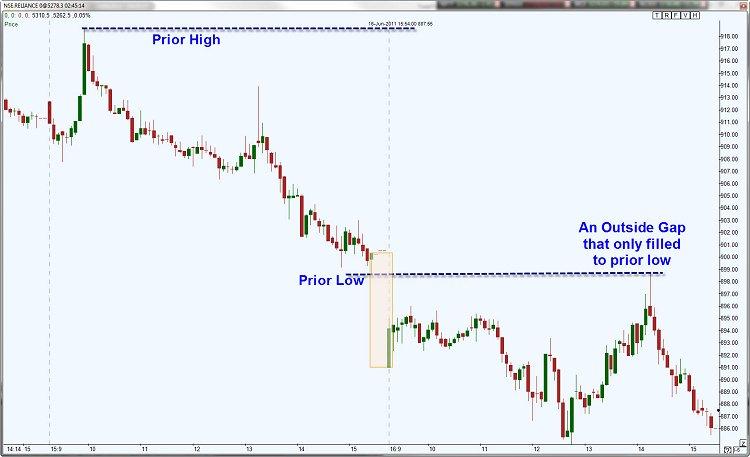

Support and resistance– the stock price is pushed back due to technical resistance.The filling usually occurs due to three reasons: If a gap is being filled on the same day it was created, it is called ‘fading,’ This happens when overnight news makes a gap, and later news kills the gap, or if cooler heads prevail and the price returns. Low volatility stocks such as penny stocks will sometimes never fill a gap. Most gaps are filled, but there are a few that do not. Do All Gaps Fill?Ī gap is said to be filled when it reverts to its original pre-gap level. However, exhaustion gaps are at the end of a pricing trend and are more likely to be filled. Breakaways confirm the direction of the pricing trend and thus cannot be filled. The type of gap also determines whether it will be filled. This is often unsustainable, and the gap is filled. The existing support or resistance thresholds are no longer valid due to the sudden price change.

Gaps are also filled due to the presence of technical resistance. In a few cases, this occurs because the influx of buyers and sellers who flocked to the stock are rethinking their positions, or investors see an opportunity in the extreme price, and in the end, they cause the price to correct itself.

Gaps are mainly temporary situations, and most of the time, they are ‘Filled.’ Filling here means the price is back to its pre-gap amount. To take advantage of a gap in the pricing of a stock, it is imperative that you correctly identify the gap and apply the appropriate trading strategy suited for it. Common Gaps- These gaps do not fall into price patterns they are formed because of normal trading activities.Continuation Gaps- Also known as runaway gaps, are found in the middle of a price pattern when investors have a sudden change in belief about the stock’s future direction.Exhaustion Gaps- occur near the end of a price pattern and are usually the signal of the last attempt at reaching a new high or low.Breakaway Gaps- When gaps occur at the end of a price pattern and signal the start of a new trend, it is called a Breakaway gap.The type of gap determines the trading strategy investors will take. There are four distinct categories of gaps on stock price charts. When the closing and opening prices are so different that they are not even connected in the chart, it is referred to as a gap. There is a similarity between the previous day’s close and the new day’s opening. Usually, the pricing information visible on a chart is continuity, even with high volatility. They are anomalies in stock price behavior followed by predictable price movements, which can become an opportunity for savvy traders to make a profit. Gaps occur due to underlying fundamental or technical factors. Smart traders can take advantage of these gaps and make profits. Therefore, the stock chart shows a gap in the regular price pattern. In stock trading, a gap is when the price chart on stock moves sharply up or down with minimal trading taking place in between.


 0 kommentar(er)
0 kommentar(er)
